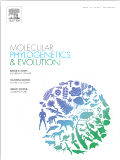“Larger molecular phylogenies based on ever more genes are becoming commonplace with the advent of cheaper and more streamlined sequencing and bioinformatics pipelines. However, many groups of inconspicuous but no less evolutionarily or ecologically important marine invertebrates are still neglected in the quest for understanding species- and higher-level phylogenetic relationships. Here, we alleviate this issue by presenting the molecular sequences of 165 cheilostome bryozoan species from New Zealand waters. New Zealand is our geographic region of choice as its cheilostome fauna is taxonomically, functionally and ecologically diverse, and better characterized than many other such faunas in the world. Using this most taxonomically broadly-sampled and statistically-supported cheilostome phylogeny comprising 214 species, when including previously published sequences, and 17 genes (2 nuclear and 15 mitochondrial) we tested several existing systematic hypotheses based solely on morphological observations. We find that lower taxonomic level hypotheses (species and genera) are robust while our inferred trees did not reflect current higher-level systematics (family and above), illustrating a general need for the rethinking of current hypotheses. To illustrate the utility of our new phylogeny, we reconstruct the evolutionary history of frontal shields (i.e., a calcified body-wall layer in ascus-bearing cheilostomes) and ask if its presence has any bearing on the diversification rates of cheilostomes.”

